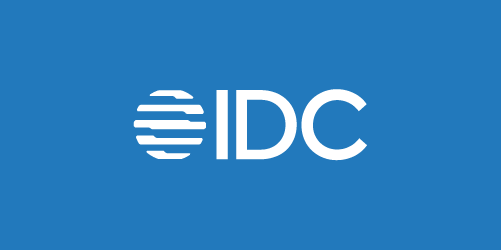LLM grounding is the process of linking linguistic turns of phrase to the real world, allowing LLMs to respond more accurately than ever before.
What is LLM Grounding?
Large Language Model (LLM) grounding – aka common-sense grounding, semantic grounding, or world knowledge grounding – enables LLMs to better understand domain-specific concepts by integrating your private enterprise data with the public information your LLM was trained on. The result is ready-to-use AI data.
LLM grounding results in more accurate and relevant responses to queries, fewer AI hallucinations, and less need for a human in the loop to supervise user interactions. Why? Because, although pre-trained LLMs contain vast amounts of knowledge, they lack your organization's data. Grounding bridges the gap between the abstract language representations generated by the LLM, and the concrete entities and situations in your business.
Why is LLM Grounding Necessary?
LLMs need grounding because they are reasoning engines, not data repositories. LLMs have a broad understanding of language, the world, logic, and text manipulation – but lack contextual or domain-specific understanding.
What’s more, LLMs possess stale knowledge. They’re trained on finite datasets that don't update continuously, and retraining them is a complex, costly, and time-consuming endeavor. LLMs are trained on publicly available information, so they have no knowledge of the wealth of data found behind corporate firewalls, customer 360 datasets in enterprise systems, or case-specific information in fields like financial services, healthcare, retail, and telecommunications.
Grounding helps an LLM to better understand and connect with the real world – and prevent hallucinations. In concept, grounding is like a bridge that allows the LLM to grasp the meaning behind words, better navigate the complex nuances of language, and connect its language skills with the actual things and situations that users encounter in everyday life.
LLM Grounding with Retrieval-Augmented Generation
You ground your LLM by exposing it to your own private knowledge bases or enterprise systems to link words and phrases to real-world references.
The most effective technique for LLM grounding is Retrieval Augmented Generation (RAG). RAG is a Generative AI (GenAI) framework that enriches LLMs with your trusted, up-to-date business data. It improves the relevance and reliability of LLM responses by adding a data retrieval stage to the response generation process. A RAG tool intercepts a user query, accesses the relevant data from the relevant source, integrates this information into a revised and enhanced prompt, and then invokes the LLM to deliver a more contextual, personal, accurate response.
Another LLM grounding technique is fine-tuning. Fine-tuning adjusts a pre-trained LLM to a specific task by further training the model on a narrower dataset for a specific application – like a customer service chatbot, or medical research. In a retrieval-augmented generation vs fine-tuning comparison, RAG is less time-consuming and less expensive than fine-tuning.
Top LLM Grounding Challenges
Grounding is a crucial step in helping LLMs interact with the real world but poses several challenges, notably:
-
Embodiment
Because LLMs are trained on text, they exist in an abstract linguistic realm. Linking textual representations to physical entities is hard to do.
-
Data ambiguity
Real-world data is messy, and fraught with inconsistencies and uncertainties. Your grounding efforts must overcome these drawbacks to let your LLM reconcile ambiguities and make sense of data that is often incomplete or contradictory.
-
Contextual understanding
The same input can have different meanings in different settings. An LLM must learn to interpret language within specific scenarios and adapt its responses accordingly. Contextual understanding is an ongoing challenge.
-
Knowledge representation
It's often unclear how to best represent real-world knowledge in an LLM's architecture. For example, should your LLM try to mimic human cognitive abilities or process information in-line using its actual computational nature? This is an active area of research and an ongoing challenge in grounding.
LLM Grounding with RAG
LLM grounding is an iterative process that often requires a RAG GenAI framework in conjunction with fine-tuning the data selection, knowledge representation, and integration techniques, to maximize effectiveness. The RAG process is as follows:
-
Sourcing
The first step is data sourcing, typically from internal docs and enterprise data. The data sources are your knowledge bases and enterprise systems. The retriever scans them to locate and aggregate relevant information.
-
Unifying data for retrieval
You should organize your data and metadata in such a way that RAG can access it in real time. For example, make sure you unify your customer 360 data to include all related master data, transaction data, and interaction data. Depending on the use case, you may need to arrange your data by other business entities, such as vendors, devices, invoices, or anything else that’s relevant for your use case.
-
Chunking documents
To enable the retriever to work on unstructured documents, you should divide the data up into more manageable chunks. Effective chunking can improve retrieval performance and accuracy. For example, a document may be a chunk on its own, but it could also be chunked down further into sections, paragraphs, sentences, or even words.
-
Embedding (turning text into vector formats)
Text data in documents should be turned into a format that RAG can use for search and retrieval. This may mean transforming the text into vectors stored in a vector database through an “embedding” process. Embeddings are linked back to the underlying source data, allowing for more accurate and relevant responses.
-
Safeguarding sensitive data
Any sensitive data retrieved must never be seen by unauthorized users – such as or Social Security Numbers by service agents or credit card details by salespeople. The RAG LLM solution should include dynamic data masking and role-based access controls to make this happen.
-
Engineering the prompt
Your RAG AI tool should auto-generate an enriched prompt by building a “story” out of the retrieved 360° data. An ongoing fine-tuning process should be in place for prompt engineering to further optimize your RAG conversational AI model.
Get the condensed version of the Gartner RAG report on us.
Extending RAG with GenAI Data Fusion
Since the most effective approach to LLM grounding is Retrieval Augmented Generation (RAG), the data available to the RAG tool is crucial to the grounding outcome. K2view GenAI Data Fusion enhances RAG with data products – reusable data assets that combine data with everything necessary to make them accessible to authorized users, are revolutionizing RAG.
Instead of relying solely on finite knowledge bases, GenAI Data Fusion lets LLMs tap into the rich tapestry of information found in your organization – including real-time insights from customer 360 or product 360 data in CRMs and other systems. It allows you to weave dynamic data and context into every response – since the LLM is prompted with contextualized queries from the very start.
With active retrieval-augmented generation is powered by GenAI Data Fusion, you can unify data from multiple source systems – via API, CDC, messaging, or streaming – to streamlines the LLM grounding process. A data product approach can be applied to RAG chatbot and other use cases, delivering insights derived from your organization’s internal information and data to:
-
Speed up problem resolution
-
Come up with hyper-personalized marketing campaigns
-
Personalize up-/ cross-sell recommendations
-
Identify fraud by detecting suspicious user activity
Meet the only RAG tools optimized for LLM grounding: K2view GenAI Data Fusion.
















